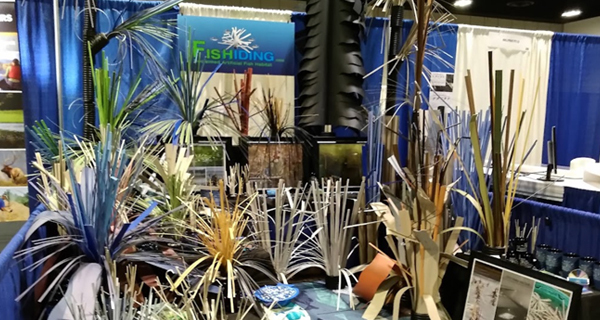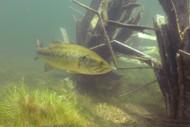The Science Behind Fishiding Artifical Fish Habitat-Time Lapse Video (Part 1 of 10)
Posted by Ewald/Engbretson on 9th Nov 2018
The Science Behind Fishiding Artificial Fish Habitat (part 1 of 10):
By David Ewald & Eric Engbretson
Part One: How They Work
Fishiding Artificial Fish Habitat isn’t designed in and of itself to attract game fish. Instead, its purpose is to provide indispensable cover for juvenile and YOY fish. It’s this congregation of juvenile and forage fish that interests game fish. Other artificial fish habitat models attempt to attract larger piscivores, but because they lack the intrinsic tight spaces and crevices to provide real protection for juvenile fish, game fish don’t develop any allegiance to these structures. Imagine an open McDonald’s restaurant with no fresh food available. Customers may stop by, but they won’t stay. Conversely, Fishiding habitat presents a perpetual 24/7 buffet of potential available forage, but they ensure that adult centrarchids still have to work to eat. If the habitat structures are designed and installed in a way that don’t reduce the attack to capture ratio, they provide no benefit for forage species and consequently won’t hold any fish at all. The key is protection. Artificial structures must be complex enough microhabitats to afford genuine fortification for small fish. In the evaluation of other types of artificial fish habitat, this is the most critical and most often overlooked aspect of design. Effective fish habitat must be constructed with a labyrinth of pockets and retreats that are completely inaccessible to larger predators.
One of the things that separate Fishiding Artificial Habitat from other designs is the amount of research that has gone into observing the units after they’ve been deployed in the lakes. We spend hundreds of hours a year photographing, filming and observing how fish respond to various designs. We’re constantly testing and discarding design aspects that serve no function or purpose while enhancing other elements that we’ve learned are preferred by the fish. Through constant observation, we can determine which features are important to fish even if we don’t yet entirely understand why. It turns out that when it comes to accepting artificial habitat, we’ve discovered that fish are much more discriminating than we would ever have imagined. Because of that, every aspect of Fishiding habitat structures has a purpose or utility that the fish have shown us they prefer. We don’t merely guess at what we think the fish will like. We actually let them tell us.
In this sixty-second time-lapse video recorded over thirty minutes of real time, you can see the abundance of life that surrounds the Fishiding habitat. Once deployed, Fishiding structures quickly become assimilated into the environment by developing thick organic growth both on the panels and in the center cores. Several units placed closely together form a complex mosaic of habitat. As you can see, location placement is also important. We didn’t just toss them into the lake. In this instance, we’ve purposefully placed the units where they can be enveloped by a colony of Chara on the lake floor—a great platform to use if you can find it—and away from any other useful, existing habitat. The synergy of this natural element and the dark center core of the structures provides authentic sanctuaries for young fish. A myriad of shady, narrow passageways and small compartments provides an abundance of additional cover. When largemouth bass approach, it’s remarkable to see how effectively and quickly the forage fish are able to employ this cover for concealment. They seem to disappear before your eyes.
Fishiding Habitat structures also include some features designed to aid predator fish. Wide panels are bent to provide both vertical and horizontal planes that are cleverly utilized by larger bass as surreptitious ambush stations. In future videos, we’ll show you how bass use these ambush planes and why their exact width and placement are vital.
Designing and building effective fish habitat really is a science, and while it’s still in its infancy, we’re learning a great deal every day about the nuances of design and deployment. With so much interest in artificial fish habitat today, we’re eager to share our research findings with fisheries professionals who want to learn more. We’ve come a long way since the days of throwing discarded Christmas trees into our lakes and calling it a day. Stay tuned. In this continuing ten-part series, we’ll show you additional underwater video of how fish utilize artificial habitat and why so many popular designs are completely ineffective.
For more information contact David Ewald at https://www.fishiding.com
Phone: (815) 693-0894
Email: sales@fishiding.com



